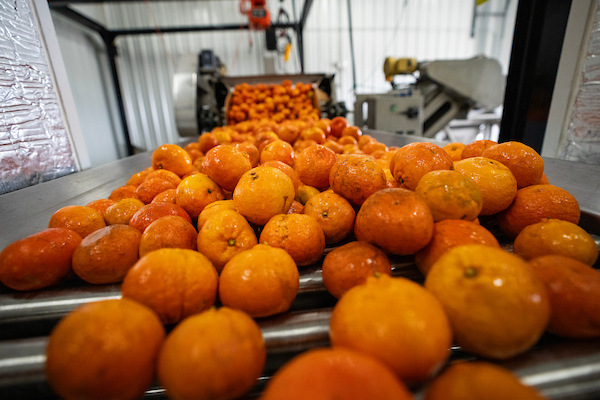Boosting Canada’s agricultural productivity through investment and innovation – Farms.com

Report on Agricultural Technology Investment in Canada and Alignment with Sustainable Development Goals
Introduction: A Critical Juncture for Canadian Agriculture
The Canadian agricultural sector is facing significant challenges, including intensifying global food demand, tightening profit margins, and mounting climate pressures. The strategic adoption and commercialization of agricultural technology (ag-tech) present a critical pathway to address these issues. Accelerating this process requires a robust investment environment to attract venture capital and foster innovation. This report outlines the current state of ag-tech investment in Canada, emphasizing the urgent need for a bold and ambitious strategy aligned with the United Nations’ Sustainable Development Goals (SDGs).
Current State of Investment and Global Standing
Comparative Analysis of Venture Capital Investment
Despite its reputation as a major food producer, Canada significantly lags behind its international peers in ag-tech investment. This gap undermines Canada’s potential to lead in achieving SDG 2 (Zero Hunger) by ensuring sustainable food production systems.
- In 2024, Canada attracted less than 2% of global venture capital in ag-tech, compared to 45.3% for the United States.
- The value of U.S. venture capital deals in ag-tech surpassed Canadian deals by a ratio of 23 to 1.
- This investment disparity is reflected in global export rankings, with the U.S. ranking first (over 9% of global exports) and Canada eighth (less than 4%).
Decline in Research and Development (R&D) Spending
Historically a leader in agricultural R&D, Canada’s investment has fallen below that of the U.S., Japan, and the OECD average. This decline impedes progress toward SDG 9 (Industry, Innovation, and Infrastructure). Reversing this trend is crucial, as every dollar invested in agricultural R&D is estimated to yield a return of $10 to $20, directly contributing to SDG 8 (Decent Work and Economic Growth).
The Imperative for Ag-Tech Investment: Advancing the SDGs
Enhancing Productivity for Global Food Security
Investing in the commercialization of emerging technologies such as artificial intelligence, robotics, and data-driven tools is essential. These innovations can significantly enhance agricultural productivity and efficiency. By doing so, Canada can bolster its position in the global food system, making a more substantial contribution to SDG 2 (Zero Hunger) and promoting sustainable production patterns in line with SDG 12 (Responsible Consumption and Production).
Fostering a Sustainable and Innovative Ecosystem
A thriving ag-tech ecosystem, where startups, researchers, and investors collaborate, is fundamental to translating breakthrough technologies from the laboratory to the field. This collaborative approach supports SDG 9 (Industry, Innovation, and Infrastructure) and fosters partnerships essential for achieving all goals, as highlighted in SDG 17 (Partnerships for the Goals). Furthermore, many ag-tech innovations are designed to improve resource management and reduce environmental impact, directly addressing SDG 13 (Climate Action).
Strategic Recommendations for Catalyzing Investment and Innovation
To enhance Canada’s agricultural sector and align its growth with the SDGs, the following strategic actions are recommended:
- Drive Strategic Knowledge Generation: Focus public and private R&D investment on key national and global challenges, ensuring that innovation is targeted to support SDG 2 and SDG 13.
- Seek Strategic Opportunities at Home and Abroad: Actively pursue opportunities to import and adapt international innovations while fostering domestic technologies. This global collaboration is central to SDG 17.
- Strengthen the Ag-Tech Ecosystem: Build a more integrated network of researchers, entrepreneurs, and investors to accelerate the commercialization pipeline, a core objective of SDG 9.
- Harvest Low-Hanging Fruit: Promote the widespread adoption of existing, proven technologies that offer immediate gains in productivity and sustainability, contributing quickly to SDG 12.
- Focus on Sustainability: Prioritize investments in technologies that enhance the environmental sustainability of agriculture, ensuring the sector’s long-term resilience and its contribution to climate action goals.
Conclusion: An Industry Call to Action
The future growth and sustainability of Canadian agriculture depend on the sector’s ability to innovate and adapt. By embracing new technologies and strategically investing in R&D, Canada can address current challenges, enhance productivity, and seize a potential $30 billion growth opportunity. Fostering a culture of innovation is not only a matter of economic competitiveness but a commitment to achieving a sustainable future and fulfilling Canada’s role in advancing the global Sustainable Development Goals.
SDGs Addressed in the Article
-
SDG 2: Zero Hunger
The article directly connects to this goal by addressing the challenge of “global food demand intensifies” and highlighting Canada’s role as a “linchpin in the global food system.” The core argument is that investing in agricultural technology is essential to boost productivity and meet this growing demand, thereby contributing to global food security.
-
SDG 8: Decent Work and Economic Growth
This goal is relevant as the article frames agricultural innovation not just as a solution to food demand but as a significant economic driver. It states that R&D “helps power the economy” and estimates that “every dollar invested in agricultural R&D yields a return of $10 to $20,” pointing to a “$30 billion opportunity for Canadian farmers.”
-
SDG 9: Industry, Innovation, and Infrastructure
This is a central theme of the article. The text is a call to action to “accelerate commercialization” of ag tech, “increase research spending,” and “foster a thriving ecosystem in which startups, researchers, and investors collaborate.” It focuses on upgrading the agricultural sector through technology and innovation, such as “artificial intelligence, robotics, and data-driven tools.”
-
SDG 17: Partnerships for the Goals
The article emphasizes the need for collaboration and partnerships. It calls for strengthening the “ag tech ecosystem” by bringing together “startups, researchers, and investors.” Furthermore, it advocates for international cooperation by suggesting Canada should “look beyond our borders and find opportunities to import innovation,” highlighting the need for global partnerships to advance technology and investment.
Specific SDG Targets Identified
SDG 2: Zero Hunger
-
Target 2.4: By 2030, ensure sustainable food production systems and implement resilient agricultural practices that increase productivity and production, that help maintain ecosystems, that strengthen capacity for adaptation to climate change…
Explanation: The article mentions the need to address “climate pressures” and focuses on “sustainability” as a key recommendation. The entire push for ag tech innovation is aimed at enhancing “agricultural productivity and efficiency” to ensure the sector’s “future growth and sustainability.”
-
Target 2.a: Increase investment, including through enhanced international cooperation, in rural infrastructure, agricultural research and extension services, technology development and plant and livestock gene banks in order to enhance agricultural productive capacity…
Explanation: This target is directly addressed. The article is a strong appeal to “increase research spending,” “attract venture capital,” and “accelerate commercialization” of technologies. It explicitly calls for an improved “investment environment” and for Canada to “import innovation.”
SDG 8: Decent Work and Economic Growth
-
Target 8.2: Achieve higher levels of economic productivity through diversification, technological upgrading and innovation…
Explanation: The article’s main argument is that Canada can “significantly enhance agricultural productivity and efficiency” by investing in and adopting “emerging technologies… such as artificial intelligence, robotics, and data-driven tools.” This directly aligns with achieving economic productivity through technological upgrading and innovation.
SDG 9: Industry, Innovation, and Infrastructure
-
Target 9.5: Enhance scientific research, upgrade the technological capabilities of industrial sectors…, encouraging innovation and substantially increasing… public and private research and development spending.
Explanation: The article is fundamentally about this target. It laments that Canada “lags international peers in ag tech investment” and calls to “increase research spending,” “drive agricultural knowledge generation,” and “strengthen the ag tech ecosystem” to bring “breakthrough technologies from lab to field.”
SDG 17: Partnerships for the Goals
-
Target 17.17: Encourage and promote effective public, public-private and civil society partnerships, building on the experience and resourcing strategies of partnerships.
Explanation: The article explicitly calls for creating a “thriving ecosystem in which startups, researchers, and investors collaborate.” This describes the multi-stakeholder, public-private partnerships necessary to drive innovation and commercialization in the ag tech sector.
Implied or Mentioned Indicators
Indicators for SDG 2
- Indicator 2.a.1 (The agriculture orientation index for government expenditures): This is implied through the discussion of R&D investment levels. The article provides a specific data point that functions as a proxy indicator: “Agriculture R&D spending as a percentage of industry revenue,” noting that Canada’s leadership in this area has declined since the mid-2000s.
Indicators for SDG 9
- Indicator 9.5.1 (Research and development expenditure as a proportion of GDP): The article provides specific data points related to private R&D investment, which serve as direct measures for this indicator. It states that “Canada captured less than 2% of global venture capital ag tech deal values in 2024” and that “U.S. venture capital ag tech deals that year outvalued their Canadian counterparts by a ratio of 23 to 1.”
Indicators for SDG 17
- Indicator 17.17.1 (Amount of United States dollars committed to public-private and civil society partnerships): The article provides a direct measure of private investment within these partnerships by citing the value of venture capital deals. The figure that “Canada captured less than 2% of global venture capital ag tech deal values in 2024” serves as a quantifiable indicator of the financial commitment to these collaborations.
Summary of SDGs, Targets, and Indicators
| SDGs | Targets | Indicators |
|---|---|---|
| SDG 2: Zero Hunger | Target 2.4: Ensure sustainable food production systems and implement resilient agricultural practices. | Mention of addressing “climate pressures” and a focus on “sustainability.” |
| Target 2.a: Increase investment in agricultural research and technology development. | Proxy Indicator: “Agriculture R&D spending as a percentage of industry revenue.” | |
| SDG 8: Decent Work and Economic Growth | Target 8.2: Achieve higher levels of economic productivity through technological upgrading and innovation. | Implied Indicator: Economic return on investment, cited as “$10 to $20” for every dollar invested in agricultural R&D. |
| SDG 9: Industry, Innovation, and Infrastructure | Target 9.5: Enhance scientific research and increase public and private R&D spending. | Specific Indicator Data: “Canada captured less than 2% of global venture capital ag tech deal values in 2024.” The ratio of U.S. to Canadian venture capital deals is “23 to 1.” |
| SDG 17: Partnerships for the Goals | Target 17.17: Encourage and promote effective public-private and civil society partnerships. | Specific Indicator Data: The amount of venture capital committed to the ag tech ecosystem, such as the “less than 2% of global venture capital” figure, measures the financial aspect of these partnerships. |
Source: fcc-fac.ca

What is Your Reaction?
 Like
0
Like
0
 Dislike
0
Dislike
0
 Love
0
Love
0
 Funny
0
Funny
0
 Angry
0
Angry
0
 Sad
0
Sad
0
 Wow
0
Wow
0












































































